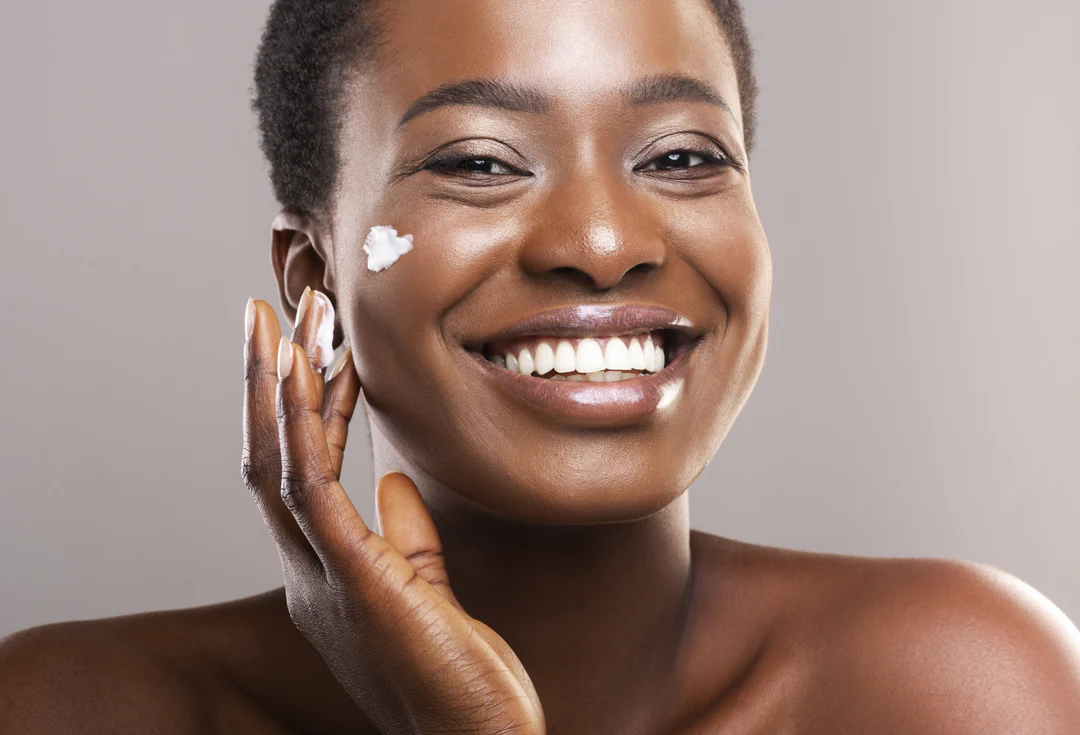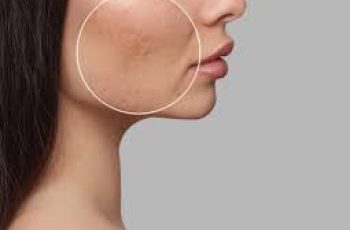
Can I use a Salicylic Acid Cleanser with Lactic Acid?
You’ve no doubt heard the words AHA and BHA when talking about skincare formulations. In recent years our knowledge and love for these chemical exfoliants have irrupted onto the beauty scene, and now it’s hard to think of a skincare routine without at least one acid included.
Now, if you are wanting to know more about what are AHAs and BHAs and the benefits they deliver to the skin you can check out our blog post. As for today’s blog post, we are going to find out together whether you can use a salicylic acid cleanser with lactic acid.
What can you not mix with lactic acid?
When using lactic acid, it is considered best to avoid applying it to the skin with vitamin C. The reason for this is because of the pH levels of each ingredient are both low, due to the fact they are both acidic. When layering products, it is important to remember that teaming ingredients together effectively relies on the pH levels complimenting each other. Having said that, a worthwhile skincare routine would in fact include vitamin C and lactic acid. If you are wanting to use both then I would suggest applying a serum enriched in vitamin C in the morning. The antioxidants in the formula will help combat free radical damage such as exposure to UV rays, pollution, and environmental aggressors. You can use a lactic acid toner during your evening routine to rid the skin from the build-up of impurities, dirt, bacteria, and layer of dead skin cells.
Should I use a cleanser with salicylic acid?
Yes and no, this is very much dependant on the skin type you have. Those who have an oily or blemish-prone skin type will find that they are able to introduce salicylic acid in their routine with little to no sign of irritation. For the most effective formulation of face wash and cleanser should include percentage varying between 0.5% up to 2%. This active level of salicylic acid will penetrate the lower layers of the skin, deep into the pores and unclog them of any build-up of excess sebum, impurities, dirt, and bacteria.
The beauty of using a cleanser contain salicylic acid is the fact it is rinsed off the skin, this prevents the potent acid remaining on the skin with the potential side effects of causing dryness and irritation.
Can you use a salicylic acid cleanser with AHA?
You can, but with caution. If you have a skin that is dry with a tendency to become sensitive using salicylic acid and other AHAs, such as lactic acid it is best to avoid overloading the skin with too much exfoliation.
If you have a combination or oily skin type teaming acids together could be a secret formula to skin clarity. With lactic acid being one of the gentlest AHAs it is unable to penetrate too far into the skin and cause irritation. It also delivers unique benefit of drawing water into the skin surface and locking it into place keeping the barrier fully functioning and at its healthiest state. To use both ingredients in your routine and reap the rewards it is important for you to leave around 15 minutes between applications, this is generally considered the right amount of time between applications to allow the skin’s pH level to rebalance itself.
Is it OK to use lactic acid every day?
It is not advised to use potent active level of lactic acid every day. However, lower percentages in rinse off formulas such as face wash, cleansers and exfoliating toners are thought to be low enough to effectively clear the skin without minimal side effects. Even if you find your skin to be quite robust and you’re accustomed to using acids in your everyday routine, if there is the slightest flare-up of redness, dryness, irritation, or skin flaking stop using the product immediately and seek the help from a doctor or medical professional. There is a dedicated blog post about lactic acid over on the Skin School blog for more information.
Is it OK to use salicylic acid every day?
You should only use salicylic acid every day if you are certain your skin is happy with you using it on a regular basis. With this BHA being one of the most potent of chemical exfoliants I would suggest firstly introducing it 3 times a week. If there are no signs of irritation, flushing, redness or dryness then you are able to step it up to more applications if you wished to. If you have any concerns or worries about using salicylic acid consult with your GP to get a better understanding and peace of mind that your skin will be happy using salicylic acid on a regular basis. If you are wanting to know more about salicylic acid, there is a dedicated blog post about its full benefits.
Can I use lactic acid every night?
Yes, it is usually considered that using a chemical exfoliant in the evening is the optimal way of obtaining the full benefits. This is because whilst you sleep, the acids can work on the surface of the skin, ridding it of any impurities or debris without having to compete against damage and exposure to free radicals, such as UV rays and pollution.
When using lactic acid in the night I would say try teaming it with a serum enriched in hyaluronic acid. This will give the skin the ultimate boost in hydration ensuring the protective barrier is packed with correct level of water and oil.
Can you put lactic acid on pimples?
Yes, you can, although it is thought that salicylic acid is the most effective ingredient to use on pimples, lactic acid makes a good alternative to those with a dry, yet blemished skin. Lactic acid will rid the skin gently of any bacteria and dead skin cells that can lead to blemishes and breakouts.
So, there you have it, hopefully I have cleared up some confusion that you may have had about whether you can use a salicylic acid cleanser with lactic acid. Come and follow us on Instagram for new product launches, discounts, and skin expert tips!
DQH Knowledge drop: In your 20s, your skin cell turnover decreases. (Cell turnover is a key component in keeping your skin youthful.) You know what else slows down? Your collagen production. Starting in your 20s, collagen decreases by about 1 percent per year. Should you want to prevent fine lines and wrinkles, start by eliminating behaviors that contribute to premature aging. “If it’s bad for you, it’s bad for your skin,” says dermatologist Michel Somenek.
“Cigarette smoking reduces blood flow to the skin and causes premature wrinkling and a dull skin texture. Making the repeated pursed motion to inhale can also cause smoker’s lines. Alcohol and recreational drugs are toxins for the skin that damage its cellular structure and DNA,” Somenek tells us. “The faster you eliminate vices while you are young, the better chance your skin and body have to recuperate.” Also, adopting an anti-aging routine in your 20s is key. After all, the best offense is a good defense. We spoke to Somenek and experts Joshua Ross and Audrey Kunin to find out more.
Keep reading for the best anti-aging products for your 20s, according to skincare professionals.
Sunscreen
“We all know that the sun is the number one cause of skin aging and starting the prevention in your 20s is very important,” Ross says. “The majority of your sun damage won’t start to appear until you’re in your 30s, so don’t wait until you see it surface or you’ll be behind the curve. Stay ahead of it with a good-quality zinc-based sunscreen worn daily.”
Farmacy Green Defense Daily Mineral Sunscreen
An invisible sunscreen with SPF 30, plus botanical extracts meant to protect skin with tons of antioxidants. Bonus: It’s clean and fine to use under makeup.
Bareminerals Complexion Rescue™ Tinted Moisturizer Broad Spectrum SPF 30
Although we recommend you use your SPF and moisturizer separately, we also understand moments when you don’t have time or energy for that extra step. For those times, this bareMinerals moisturizer is a great thing to have on hand.
Vitamin C Serum
“A great introduction to anti-aging is to start with a vitamin C serum in your morning skincare routine,” Ross says. “It’s a powerful antioxidant that will neutralize free radicals and brighten the skin.” He adds that it’s a great way to counteract the effects of the sun’s harmful rays, which, as previously mentioned, are among the biggest causes of premature aging.
Drunk Elephant C-Firma™ Vitamin C Day Serum
The Drunk Elephant C-Firma is a lightweight serum that promises to give skin a glow by combining the brightening powers of vitamin C with ferulic acid, l-ascorbic acid, and vitamin E. The included sodium hyaluronate is meant to replace hydration loss, so you shouldn’t have to deal with any irritation.
Sunday Riley C.E.O. Rapid Flash Brightening Serum
This potent serum is jam-packed with vitamin C (15 percent, to be exact), which means it’s a potential superstar at both brightening skin and dousing it in antioxidants.
Peptides
Using peptides on your skin has many benefits, says Somenek. “The skin barrier is what defends the body against pollution, UV rays, bacteria, and toxins. It can be damaged by several everyday factors. Using topical peptides aids in building a stronger barrier,” he says. “Peptides comprise elastic fibers, which are a type of protein. These fibers help to make skin appear taut and firm. Peptides can also help repair damaged skin, relieve inflammation, and even out skin tone. Some peptides can kill acne-causing bacteria that is common in 20-somethings.”
Kunin agrees, saying, “Peptides are an excellent entry point for supporting collagen.” She recommends looking for face and eye treatments that contain these collagen-boosting powerhouses.
Charlotte Tilbury Magic Eye Rescue Cream
This Charlotte Tilbury super-emollient eye cream has a base of coconut oil and shea butter (read: it’s incredibly hydrating). Botanicals plus peptides are meant to help reduce dark circles and boost collagen, respectively.
This creamy moisturizer serves up potent collagen-boosting peptides and pycnogenol, and antioxidant-rich vitamin C. “Instead of sitting on top of the skin, peptides penetrate the outer layer so they go deep. The ‘signals’ they send tell the cells to produce elastin and collagen, which are needed for youthful-looking skin,” explains Somenek.
At-Home Peel Pads
Remember that skin cell turnover fiasco we talked about earlier? One way to help support it is by exfoliating. “Exfoliation is important to help keep skin fresh and luminous,” Kunin says. She recommends using at-home peel pads as an easy and effective way to exfoliate.
“The goal in your 20s is to fight the slowing pace of cell turnover. It is wise to use products that gently exfoliate, yet still remove oil and other impurities. Products that have Alpha Hydroxy Acids (AHA) or Beta Hydroxy Acids (BHA) are a good choice.”
According to Somenek, you should only exfoliate two to three times a week. “People of all ages are guilty of over-exfoliating and that can be too much of a good thing,” he says.
Dermadoctor Kakadu C Intensive Vitamin C Peel Pad
A few swipes of this Derma Doctor powerful peel pad promise to leave your skin glowing and smooth, thanks to the seven (yes, seven) types of chemical exfoliants, including AHA and BHA. It also contains vitamin C via Kakadu plum extract for added brightening and antioxidant protection.
KEY INGREDIENTS Kakadu plum extract is sourced from the Kakadu plum, a fruit grown in northern Australia. It contains vitamin C, which restores the skin’s natural barrier, increases collagen production, and soothes irritation.
Dr. Dennis Gross Skincare Alpha Beta® Universal Daily Peel Pads
These are the gold standard of peel pads, with a cult following and over 900 five-star reviews on Sephora. They’re easy to use and contain a blend of anti-aging exfoliating acids.
Emollient Night Cream
“In your 20s, you need to start upping the hydration in your skincare routine. You may have been cautious of over-moisturizing because of acne in your teens, but as you enter your 20s, your skin transitions and becomes drier,” Ross says. “I recommend an emollient night cream added into your evening skincare regimen.”
“Twenty-somethings need to make sure that they are not using creams that will clog their pores and cause excess oil production,” says Somenek. Opt for non-comedogenic products.
Cerave Skin Renewing Night Cream
One great choice is the CeraVe Skin Renewing Night Cream, which is a non-comedogenic night cream that leaves skin soft and glowy. It combines the moisturizing powers of ceramides and hyaluronic acid.
RoC Retinol Correxion Max Hydration Creme
“The best night cream ingredients contain retinol, benzoyl peroxide, and/or salicylic acid or hyaluronic acid. The goal is to moisturize, yet remove excess oil,” says Somenek. This Roc Retinol Correxion cream fits the bill as it contains both hyaluronic acid and retinol so it promises to moisturize while also being non-comedogenic.


